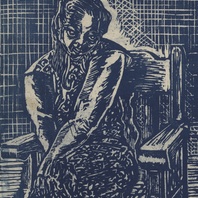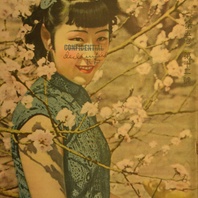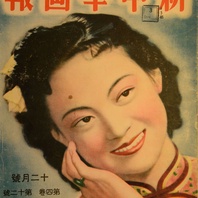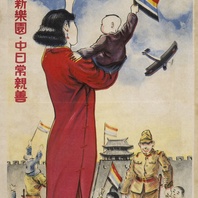
Item
Furen xiang (Portrait of a woman)
This woodcut, by an artist called Ma Wu (probably the most prolific of Chinese popular artists openly active during the Japanese occupation), was reproduced in Zhonghua huabao (Chinese Pictorial) 2.2 (March 1943). The importance of the muke (woodcut) form to artistic practice in occupied China has been almost entirely overlooked in the literature. The muke form has hitherto been associated with the art of resistance in China, despite being an important part of “occupation” visual cultures as well.
Read More

Item
Xin Zhonghua huabao (New China Pictorial) cover, December 1943
This cover image from the Xin Zhonghua huabao (New China Pictorial) 5.12 (December 1943) shows a colourised photograph of an unidentified “modern girl”. The New China Pictorial was a bilingual (Chinese-English) magazine published from 1939 through 1944 in Shanghai by the occupation journalist Wu Linzhi for distribution in China and throughout Southeast Asia.
Read More

Item
Xin Zhonghua huabao (New China Pictorial) cover, December 1942
This cover from the Xin Zhonghua huabao (New China Pictorial) 4.12 (December 1942) features an image of Li Lihua. Li was one of the most popular film celebrities in wartime Shanghai, and was favoured by the occupation regime in pro-government media. The New China Pictorial was a bilingual (Chinese-English) magazine published from 1939 through 1944 in Shanghai by the occupation journalist Wu Linzhi for distribution in China and throughout Southeast Asia.
Read More

Item
Ertong xin leyuan, Zhong-Ri chang qinshan (New paradise for children; China and Japan will forever be close)
This poster, almost certainly produced with the aim of encouraging civilians in occupied Beijing to embrace Japanese rule, includes many of the standard tropes of early occupied north China propaganda: a “new woman” with a male child; city walls; Japanese soldiers fraternising with Chinese infants; the “five-coloured flag” (wuseqi); and a sky filled with Japanese airplanes.